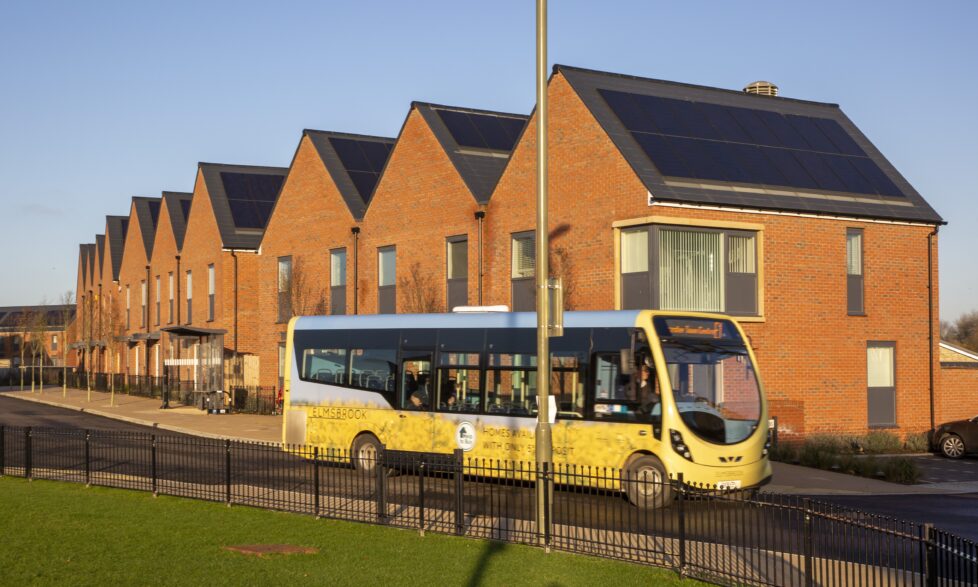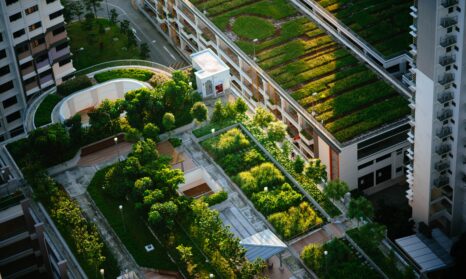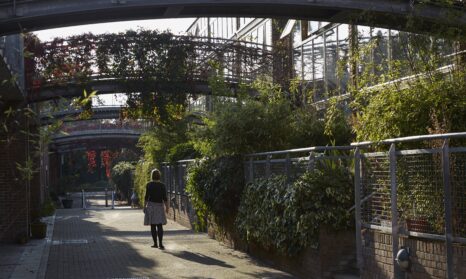Future Homes Standard: Let’s not waste the biggest opportunity we have for the UK to show climate leadership in 2020
In June 2019, the UK Government set in law a target to bring net greenhouse gas emissions to zero by 2050. Putting aside the reality that we need to get to ‘net zero’ far sooner than that, this is still one of the most ambitious targets in the world.
Homes are a key battleground for this as their energy use is responsible for 20% of the country’s emissions. Around 4 to 5 million new homes will be built by 2050. Making sure every one of them is designed and constructed so that the people living in them don’t generate any carbon emissions from doing so is essential to this. This means they need to be highly energy efficient, using renewable sources of energy where possible. In addition, how our homes are built, where they are built, and what facilities are available locally can also influence the remainder of our personal carbon footprint.
In this blog I am focusing solely on energy use in new homes, as this will be hugely influenced by a government consultation which closes in just a few days’ time on 7 February.
The most pivotal consultation to date on zero-carbon homes
Energy efficiency requirements for new homes are currently set by an obscure piece of bureaucracy: Part L of UK Building Regulations. The last major revision was in 2013 - a staggering seven years ago!
In October, the Government published a consultation on its plans for a revision to Part L, and also set out plans for a Future Homes Standard. This is perhaps the most pivotal consultation to date on the energy efficiency of new homes. It will set a trajectory for 2025 and bring in important interim changes for 2020.
Could a revision to Part L be a stepping stone to achieving new net-zero carbon homes? The last attempt – the Zero Carbon Homes Policy, which I helped write, was scrapped in 2015.
After ploughing through a 98-page consultation document, the sobering answer is no. At least, not in its current draft. But with a few changes, it could.
The key issues
There are several major issues with what’s proposed:
- The ambition is nowhere near great enough. Last year the Climate Change Committee warned that by 2030 all new buildings will need to operate at net zero carbon to have any chance at limiting global heating to 1.5 degrees. Working backwards this means that every single building will need to be designed as such by 2025. The Future Homes Standard consultation could set us firmly on track to achieve this. But the two options proposed are 20%, or 31% reductions compared to the current standards for a new home. We need to be aiming for a minimum 50% reduction in energy consumption to ensure that all new homes are on track to be net zero carbon by 2025.
Also, the government is currently only planning to introduce the Future Homes Standard in 2024. This will be too late to set us on the right track for 2030. I strongly recommend making it available before 2024, to provide early adopters a chance to ‘test drive’ the standard. - The wrong metrics are being used, making it unworkable. The targets are based on estimates of the carbon emissions that will be saved. This is a complex subject but what’s important to note is that these estimates are often wrong. The key issue is that the targets need to be based on the actual delivered energy which can be read at the meter. It must be made easier to check compliance and the building’s actual energy use (by involving households).
- New homes will be less energy-efficient if important linked standards are scrapped.
The best chance of making sure new homes help meet our climate change commitments is by building homes that don’t waste energy by leaking heat. But under the proposals, the current Fabric Energy Efficiency Standards, which govern this area, would be scrapped. This risks a lowering of standards for building fabric, which includes insulation and airtightness. It would be insanity if a new home in 2020 could be less insulated than a home under the 2013 building regulations, but that's what we’re currently looking at. The government needs to strengthen requirements on how the building itself performs.
If building fabric is not improved, we will not achieve the reductions we need. This raises the spectre of the vast majority of new homes being built from this year onwards having to be retrofitted before 2050. This could be five times more expensive than getting things right now. - Local authorities will be stripped of their ability to respond to the climate and ecological emergency. Currently, local authorities are able to set their own targets appropriate to their area. So far, 245 local authorities around the country have taken the brave decision to declare climate emergencies. Under the new regulations they will lose their ability to develop plans that respond to the emergency in any effective way. The government needs to ensure that local authorities retain the ability to set their own targets.
If we can’t get new homes right, what chance do we have with the 27 million homes that also need to be urgently retrofitted?
Our new Government is showing some signs of being on the right track. But if it sets the bar too low now, we won’t have any hope of achieving net-zero carbon in buildings by 2030 as the CCC say we must do. Following the December general election it has a large majority, cross-party support for tackling the climate and ecological emergency, amid widespread public concern. So now is the time to act.
Indeed, the Home Builders Federation have just kicked off their own route-map to zero-carbon housing. They need the Government to create the framework to make this straightforward for their members to achieve.
What can each of us do now?
Bioregional is a member of the London Energy Transformation Initiative (LETI), a brilliant network of over 1,000 built environment professionals working together to put London, and indeed the country as a whole, on the path to a zero-carbon future. LETI has created a website enabling people to add their support, and the support of their organisations, to the overall messages outlined above.
All of us in LETI believe that this is single biggest impact built environment professionals can have (beside lifestyle changes) to avoid climate breakdown. Click here and add your voice.
If the Government does get the Future Homes Standard right it won’t just be tackling the environmental challenge – it’ll also mean all new homes will be warm and cosy, with low running costs. Let’s use this opportunity to make sure this happens.
The consultation closes at 11.45pm on Friday 7 February – so we have just over 8 days left to make our voices heard. What are you waiting for? Don't miss out on having your say on the future of our housing.








